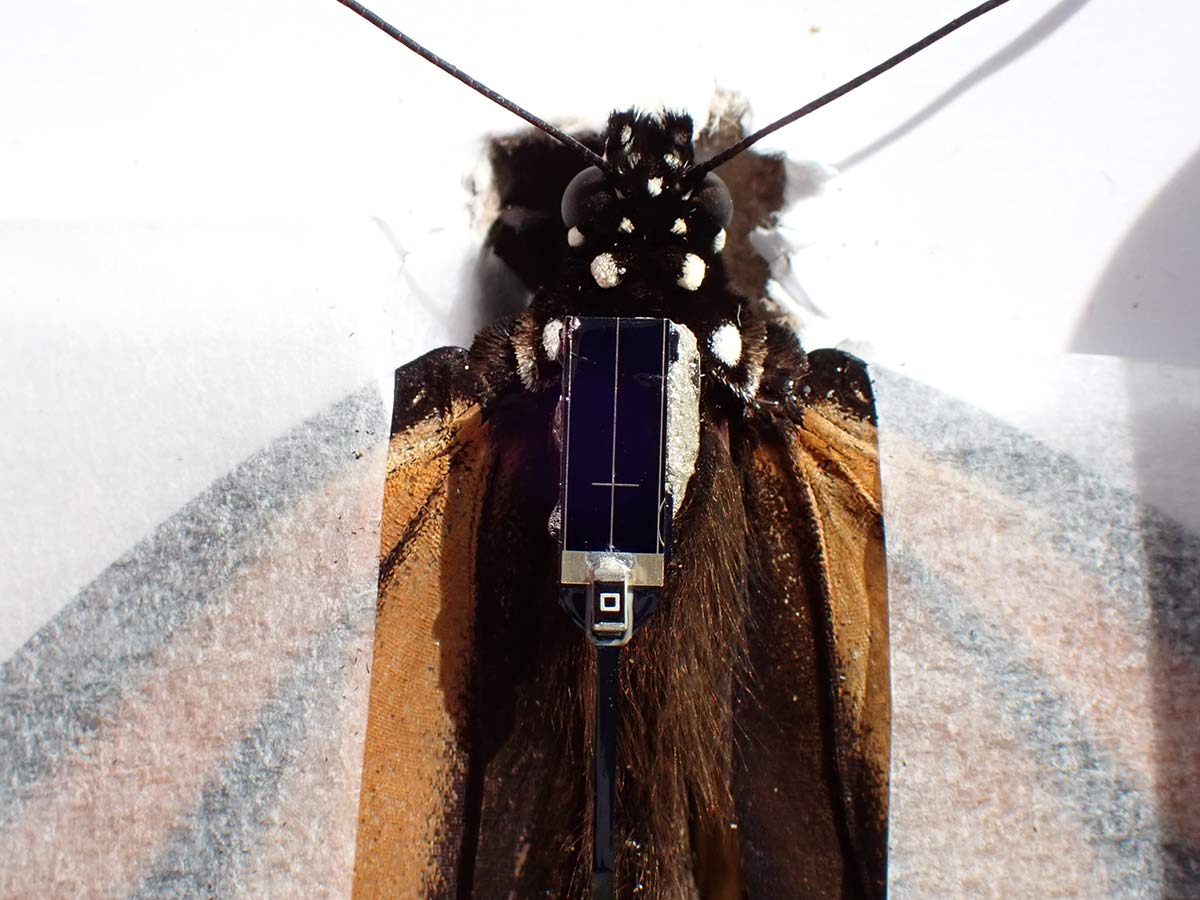A new radiotelemetry transmitter, called the Blu+, is revolutionizing how scientists can track migrating monarchs this fall.
The Blu+ transmitter, developed by Cellular Tracking Technologies and Cape May Point Arts & Science Center (CMPASC), weighs just 0.06g and can be attached to monarch butterflies.
Previous monarch tags could only be detected by specialized receivers. The new Blu+ tags can be detected much more easily, because they are integrated into a network of cellular-connected devices. Now there is potential to get hundreds or even thousands of detections per tag, giving us a much better picture of the route each monarch takes on its journey.

Xerces has been helping to test Blu series tags for over a year, and we are excited to finally put them into widespread use.
This season, Xerces and Point Blue scientists will use Blu+ tags to track eastern migrants passing through Oklahoma, and study western overwintering monarch movement in California. Other researchers and groups will also be tagging migratory monarchs this fall. Together, we hope to learn more about the detailed paths of monarchs than ever before!
You can see the location of tagged monarchs from any project using these tags by downloading the Project Monarch apps available for iPhone and Android.
To learn more about the technology and related projects, check out Monarch Joint Venture’s presentation, The Science of Radio Tagging Monarchs.
2025 Eastern Monarch Migration Updates
The first tagged Xerces monarch, a male known as XOKC005, has been detected in northern Mexico as of October 28, 2025. This monarch was tagged by Xerces biologist Dr. Ray Moranz on October 4 at the Oklahoma City Zoo, weighing in at 655mg and an above-average wing length of 54.15 mm. Prior to being detected in Coahuila, Mexico, he was last detected 9 days ago west of Abilene, Texas.
The southward migration of monarchs from the central states of Minnesota, Nebraska, Kansas, and Oklahoma has been impeded by bad weather for most of October. Day after day of strong south winds prevented millions of monarchs from flying south, but north winds finally arrived towards the end of the month, and the Xerces monarchs are on the move!


